Jamaican Sorrel vs Jamaica (Hibiscus) Tea: The Difference
When I first moved to the United States, I heard a lot of talk about Jamaica tea and how great it is. I wondered what in the world was Jamaica tea and why I had never heard of it.
You see, I was born and raised in Jamaica and had never heard of “Jamaica tea.” So I decided to do some investigation. I found some interesting facts about, Jamaican sorrel, Jamaica tea, and hibiscus tea.
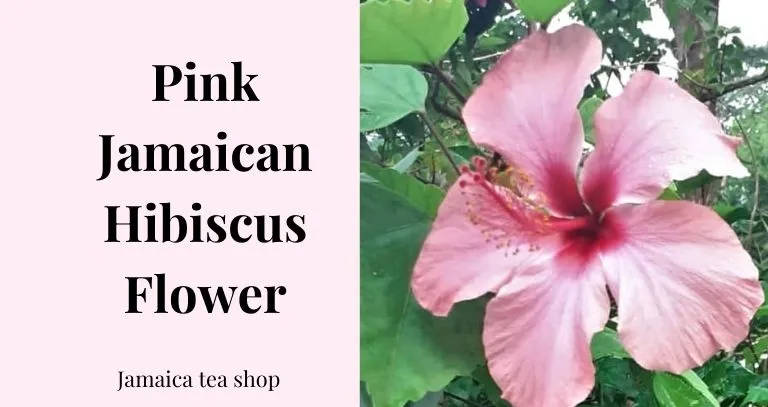
In this post, I will share with you what I learned and explain the differences and similarities between these three beverages.
Disclosure: This article may contain affilate links. It means if you make a purchase after clicking a link, I may receive a small commission. Thank you!
Jamaican Sorrel
What is Jamaican Sorrel? It is a beverage made from the Roselle hibiscus calyces. The calyces are steeped in hot water with ginger, cloves, orange rind, and cinnamon to make the refreshing drink.
The steeping process takes at least 4 hours, but very often steeping is done overnight. The combination of flavors gives Jamaican sorrel a its unique, refreshing flavor.
The next step is to strain off tthe liquid and sweeten the drink with brown sugar. Jamaican sorrel is usually served cold, over ice.
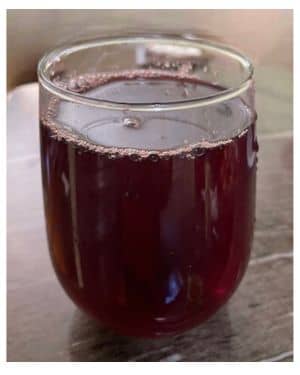
Jamaican Sorrel drink is generally reserved for festive occassions such as formal dinners, and weddings.
The drink is always available at Christmas time, along with Jamaican black cake, for when visitors come by.
And it is not uncommon to have the drink “spiked” with Jamaican rum or some other form of alcohol on these occassions.
Jamaica Tea
Jamaica (Hibiscus) tea is made from the Hibiscus sabdariffa hibiscus species that is commonly known as Roselle hibiscus. This species of hibiscus is widely cultivated and the one most commonly used for culinary purposes.
According to one source Jamaican tea got its name when spanish colonialists took Jamaican sorrel to Mexico. They called the beverage Agua de flor de Jamaica, agua de Jamaica and rosa de Jamaica.
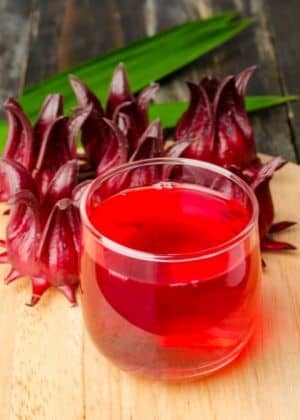
Somehow those names seemed to have gotten lost in translation. So the beverage eventually becaame Jamaica tea.
Jamaica tea is made the same way Jamaican sorrel is made useing Roselle hibiscus calcyes (seed pod covering).
The best way to describe “Jamaica tea” is that it’s a “lite version” of Jamaican Sorrel drink.
Hibiscus Tea
So what about hibiscus tea? Hisbiscus tea is not limited to Jamaican sorrel and Jamaica tea. According to one source there are approximately 200 species of the hibiscus plant and at least five species are edible.
- Hibiscus acetosella: This species is also known as cranberry hibiscus, false roselle, or African rose mallow. The plant has dark red leaves and blooms pink flowers. These edible hibiscus leave and have a lemon flavor and are used in salads ot to make tea.
- Hibiscus rosa-sinensis: The plant is also known as Chinese hibiscus, Hawaiian hibiscus, or shoeblack plant. It is the most widely cultivated species of hibiscus,and blooms many varieties and colors of flowers. The flowers are edible and can be used to make hibiscus teas, syrups, jams, or salads.

- Hibiscus syriacus: This hibiscus grows quite easily in the United States. Common names for this hibiscus are Rose of Sharon, Rose mallow, shrub althea, and syrian ketmia. The young leaves can be eaten raw or cooked. The flowers and leaves can are used to make hibiscus tea.
- Hibiscus sabdariffa: This is the popular Jamaican sorrel, Florida cranberry, roselle, or Jamaica tea hibiscus variety. Hibiscus sabdariffa is used to make jams and jellies and is especially known for making hibiscus tea and Jamaican sorrel drink.
- Hibiscus cannabinus: Also known as kenaf, Indian hemp, or mallow hemp, this hibiscus species has yellow flowers and green leaves that resemble cannabis leaves. The edible leaves taste like spinach and are used in salads, soups, or teas.
Therefore any edible hibiscus may be used to make tea. In most cases it is the leaves and flower petals that are used. If you look closely you will see that they are all used to make hibiscus tea.
But Roselle hibiscus is the most popular plant for making hibiscus tea in our part of the world.
Types of Hibiscus
Although there are more than 200 species of hibiscus worldwide, and the plants fall into two main types: Perennial Hibiscus and Tropical Hibiscus.
Perennial Hibiscus. These varieties survive in warmer locations. Hibiscus syriacus is a type of perennial hibiscus. The hibiscus flowers come in a variety of colors including red, white, yellow, lavender and more.
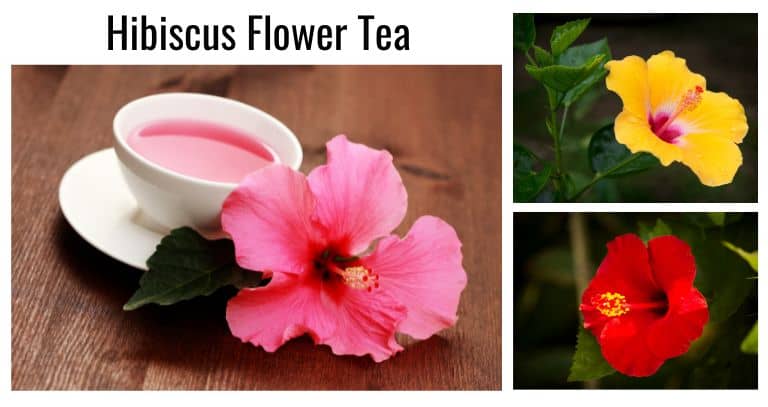
This hibiscus is common in my suburban Philadelphia neighborhood. I would even call it invasive.
The plant goes dormant in the wintertime but comes roaring to life in the spring and blooms continoulsy throughout the summer.
Both the flowers and leaves of hibiscus are edible. But I only use the petals to make hibiscus flower tea.
However, I find that when I make hibiscus tea with these flowers I can only be brew it for a few minutes or the tea will taste extremely bitter.
Tropical Hibiscus. They grow in tropical regions. They bloom and thrive all year round. The exception is Roselle hibiscus that is cultivated.
Tropical hibiscus have dark green shiny leaves that protect the plant from excess heat. They produce large bright colored flowers.
How to Grow Roselle Hibiscus
So how do you grow Roselle for making Jamaican Sorrel drink? Unlike other species of hibiscus that grow wild in Jamaica and live for years, Roselle is cultivated each year.
Sorrel seeds are planted in the late summer to early fall in full sun. The Roselle plant grows to between 4 and 6 feet tall.
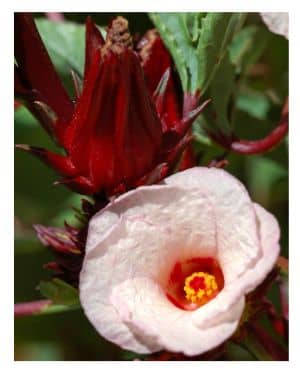
As the daylight gets shorter, the plant blooms beautiful white to light pick flowers that have a rich red center.
Shortly afterwards, the calyces begin to appear. Calcyes are the red covers that protect the encased seed pods from wind and rain. The tender calyces are reaped and either used fresh, sun dried, or frozen.
Conclusion
So is there a difference between Hibiscus (Jamaica) tea and Jamaican sorrel drink. The answer is “no,” they are both hibiscus teas. The major difference is in preparation.
And while Jamaica tea is easily available on menus in Mexican and other restaurants, traditional Jamaican sorrel is not your average lunchtime drink. It is usually reserved for special occasions.
When it comes to preparation, there are no rules for making Jamaican sorrel drink. You can add any spice you like in whatever portions you choose. And you are free to alcohol if you like.
So go ahead and give refreshing hibiscus tea a try. Just remember if you are in Jamaica don’t ask for “Jamaica tea,” Jamaicans in general won’t have a clue as to what you are asking for.
